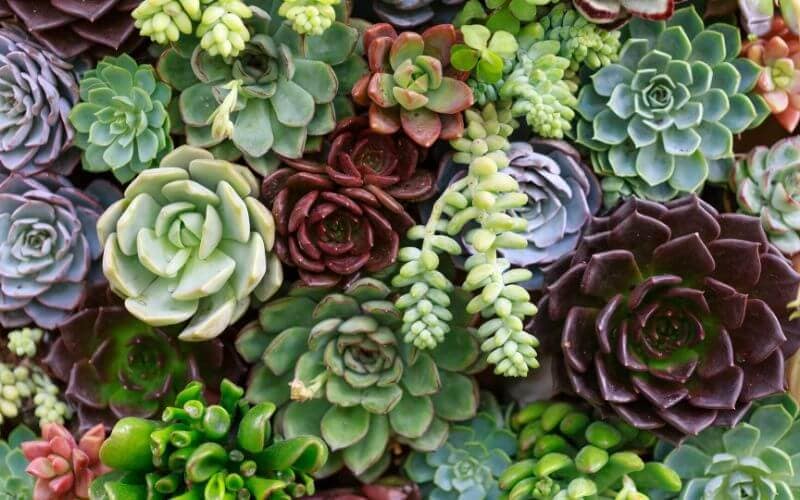
Succulent plants, or succulents, in short, are drought-resistant plants that grow well on dry and arid environments. They usually have thick and swollen stems, leaves, or roots that store water.
They are considered the ideal house plant decorations in your home, as they don’t need a lot of maintenance or attention.
If you’re interested in having succulent plants, you’re probably wondering, how long do succulents live?
Well, it depends on the type of succulent you have. Succulents come in different types, and their lifespan varies. For example, a Hens and Chicks succulent can live from 3, and above years, a Jade plant can live from 70 to 100 years, while a Barrel Cactus can live for centuries!
It’s incredible how long succulent plants can live. Imagine having the next generations from you taking care of the same plant in your garden.
But of course, succulents don’t stay alive just because they do. Many factors can affect their lifespan; that’s why they still need extra care.
Do succulents have any specific life span?

Succulents are known to be slow-growers compared to other plants. Their growth rate is highly dependent on what type of succulent they are. This is also one factor that affects their long lifespan.
In their life growth, succulents some dormant periods where they grow typically slower than their normal rate. Usually, this happens around the winter season, where environmental elements are not ideal for their growth.
During the active phase, however, they get to have new leaves and flowers. This is also the season when you should give them the right care.
It’s hard to pinpoint the average lifespan of succulents because of its many varieties. Plus, there are a lot of factors you have to consider.
Generally, when grown in their natural habitat, succulents are expected to live for years or even centuries. For those that don’t, they sometimes send off offsets, giving you new batch to plant.
Their lifespan would also highly depend on their living conditions and how you care for them. If you manage to meet the right growth conditions, regardless if they’re grown indoors or outdoors, they’ll surely live longer than you expect them to be.
Most Common Succulents and their Average Lifespan
Now, let’s take a look at the most common succulents you can grow at home. At the same time, I’m going to point out the best environmental conditions for which these succulents will grow.
1: Jade Plant

Jade Plant, also called the money plant, is very easy to care for and has a long lifespan. The plant is known to bring good luck, so even if some people refer to it as old fashioned, it’s still one of the most popular succulents although it’s more popular in the past than today.
These succulents live for so many years. Their average lifespan is at 70 to 100 years. So, if you have this plant while you’re young, you can expect it to grow with you. Some people even say that these succulents can live longer than them.
If you want them to reach this kind of longevity, you must give them the right care.
These plants would love to be placed under direct sunlight for four or more hours. They should also be watered often to keep the soil moist (not wet).
Temperatures should be around 65 to 70 degrees Fahrenheit, and soil should be well-drained.
Jade Plants grow best in tropical areas where it’s warm. And if it’s winter, then indoors with be the ideal environment for them.
Just use artificial lights for lighting and adjust temperatures where they would grow. Also, avoid overwatering them.
2: Hens And Chicks
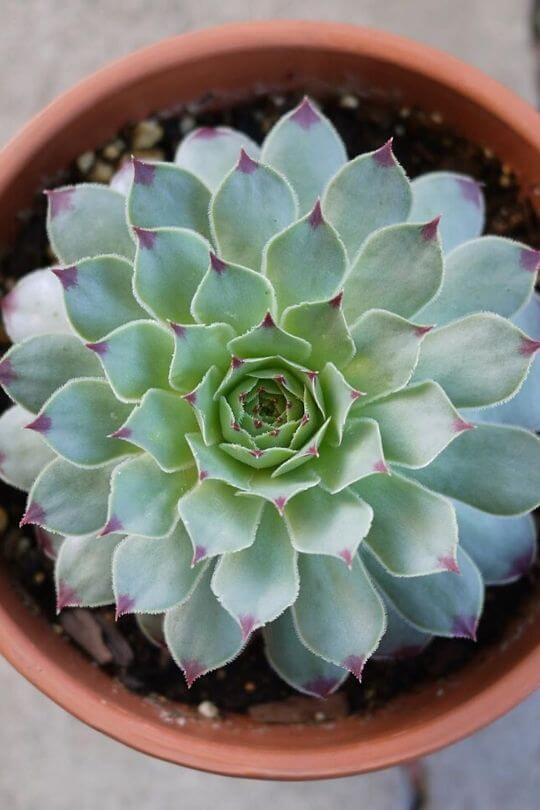
Hens and Chicks is a succulent plant native to Southern Europe and Northern Africa. It is a petite plant, which is why it’s probably referred to as the cutest succulent.
The name Hens and Chicks is based on the structure of the plant itself. There’s a mother plant, the bigger base, that is connected to smaller ones, which is her chicks.
The average lifespan of Hens and Chicks is at 3+ years. And caring for them well is very important if you want them to survive for more than three years.
This succulent is one of the easiest to care for, and it’s even perfect for those living in temperate conditions. They also might be the only succulent plant that can survive not only frost but snow.
Don’t have enough soil to plant them? That’s alright! Because Hens and Chicks can grow in rock gardens. But they can also thrive in flowerbeds if you desire. They may need direct sunlight but can tolerate being put on the shade.
They are not selective with their environment as long as you don’t give them too much water. So quick-draining soil is essential.
4: Aloe Vera

The Aloe Vera plant is also one of the most loved succulents because of its many benefits. The leaves are thick and contain a gel that is known for its many healing benefits.
Aloe Vera reaches maturity within 3-4 years. And if given the right care, it will live up to 12 years, reaching about 60 to 100cm tall around this time. The plant comes in many varieties, but the care you give them, as well as their lifespan, is almost the same.
These plants love the sun, but shouldn’t be kept direct it on long hours as they might get burned. It can tolerate colder temperatures but do well at room temperature. It’s also best not to overwater them.
Allow the soil to dry first before watering them again. And just like any other succulents, well-drained soil is the best for the Aloe Vera.
5: Barrel Cactus
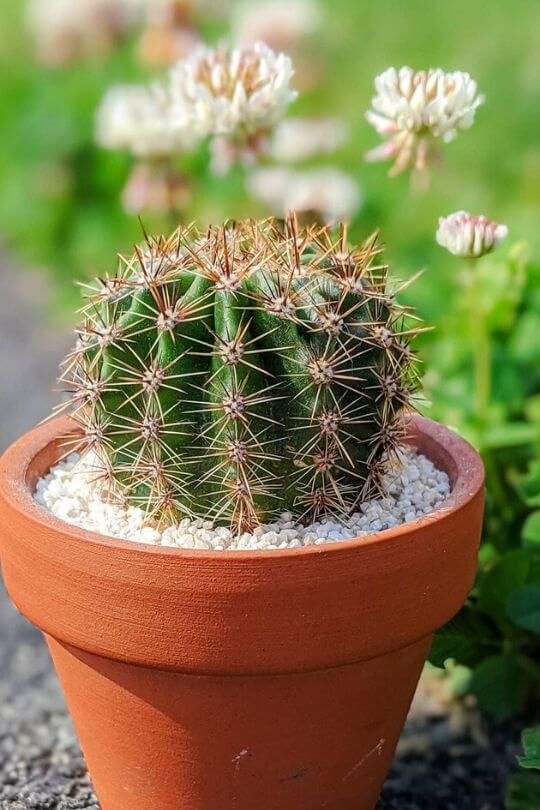
The Barrel Cactus is probably one of the succulents with a very long lifespan. These succulents can live for 50 years the least and can extend to centuries if in their ideal living conditions.
They got their name from the fact that they look like a barrel, and their spines can range in various colors.
Known to live in deserts, these succulents would appreciate being put under a bright sunny location. Don’t put under direct sunlight, though, as it may burn. And just like any other succulents, they’ll grow well in well-drained soil.
Water should be kept at a minimum. Once a week, watering during the summer should do and would take less than that during the winter season. If possible, wait until the soil is completely dry before watering again.
6: Living Stones
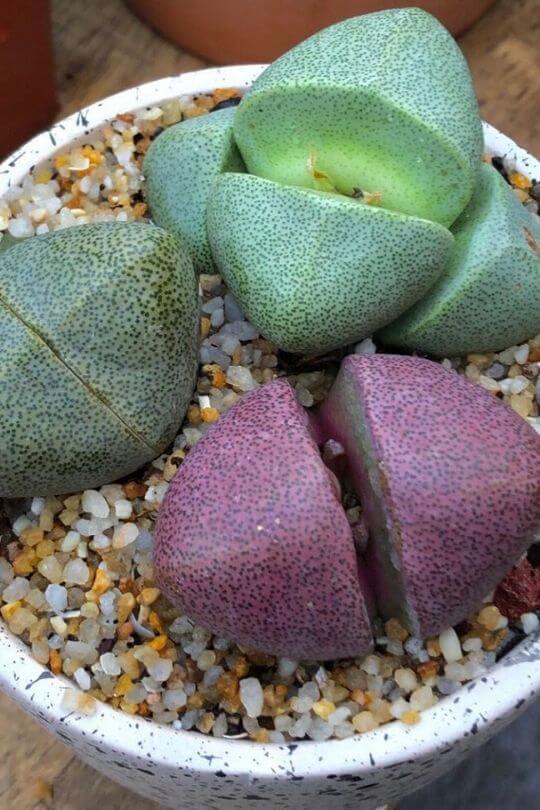
Living Stones or Lithops is a succulent native to South Africa. They are one of the most unusual succulents and may look like pebbles at first look, hence their name. But this appearance is what protects them in their natural environment.
This plant can live up to 50 years, especially with the right care. And this is something that you wouldn’t have to worry about because they are very low maintenance plants.
Living Stones grow well in low humidity, and they need very infrequent watering. Some people say you don’t need to pay attention to them at all, other than the need to put them in a location with bright sunlight. You can also place them under direct sunlight but only for 4-5 hours.
Well-drained soil is the best that you can provide them. This is so water won’t be able to retain and cause the plant to die earlier as it should be.
7: Christmas Cactus
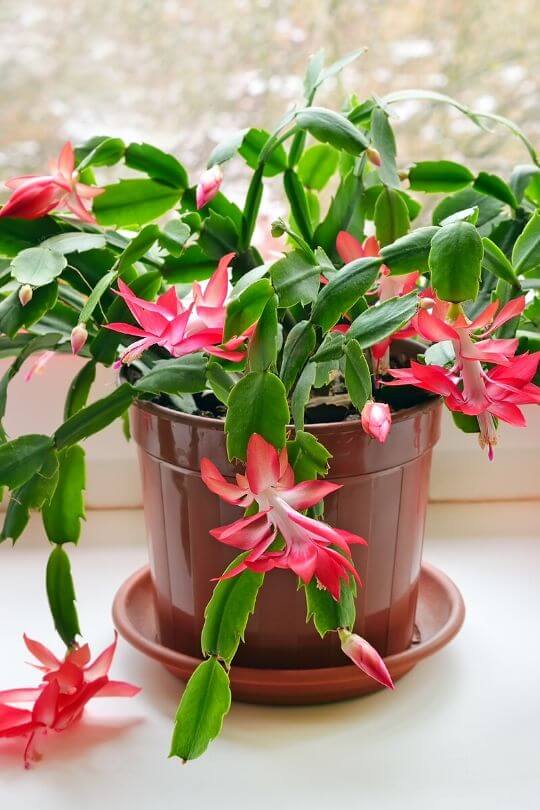
Christmas Cactus is a succulent well known in Brazil. It produces red, pink, white, or flowers that look great for homes. It has an average lifespan of 20 or more years, as long as cared for really well.
The only problem, however, these succulents are not the easiest to care for. They need enough water, but never too many.
Once the top of the soil feels dry, it’s time to water them again. Grow them in a pot with drainage holes, and use well-drained soil only.
Use some fertilizer to support their growth. And during winter, when the air is dry, place a shallow bowl of water to help humidify the air.
As for the sunlight, they would love to be put somewhere bright, but never place it directly under the sun to avoid burning its leaves.
8: Crown Of Thorns
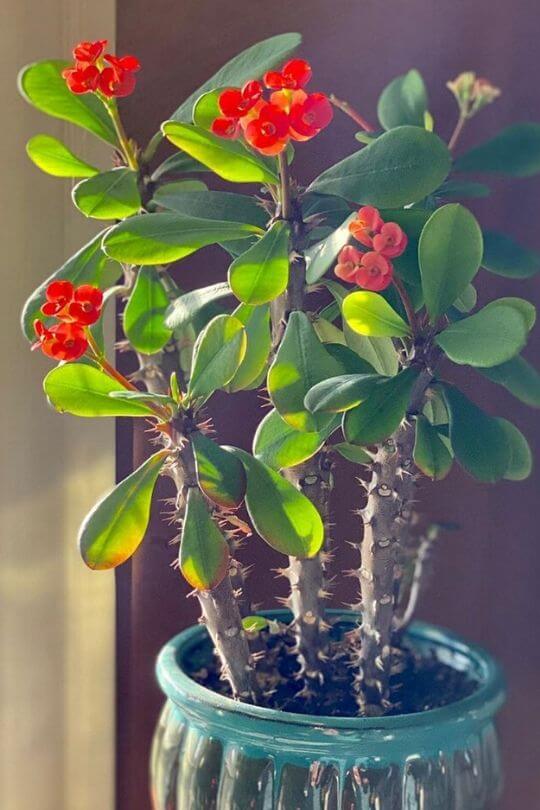
Crown of Thorns or also known as Euphorbia, is a succulent plant with stems covered with thorns. It grows large flowers that come in various colors depending on the type. This plant can live up to 25 years, and they’re easy to grow indoors.
They love being placed near a sunny window and have to receive at least three to four hours of sunlight.
They can also thrive in room temperatures and can even withstand throughout winter and summer seasons.
You should only water these plants during spring and late fall when the soil is dry at least 1 inch from the surface. In the winter, wait for the soil to dry at least 2-3 inches from the surface.
Make sure to use a pot with drainage holes and well-drained soil so water wouldn’t stay sitting on the pot.
9: Echeveria
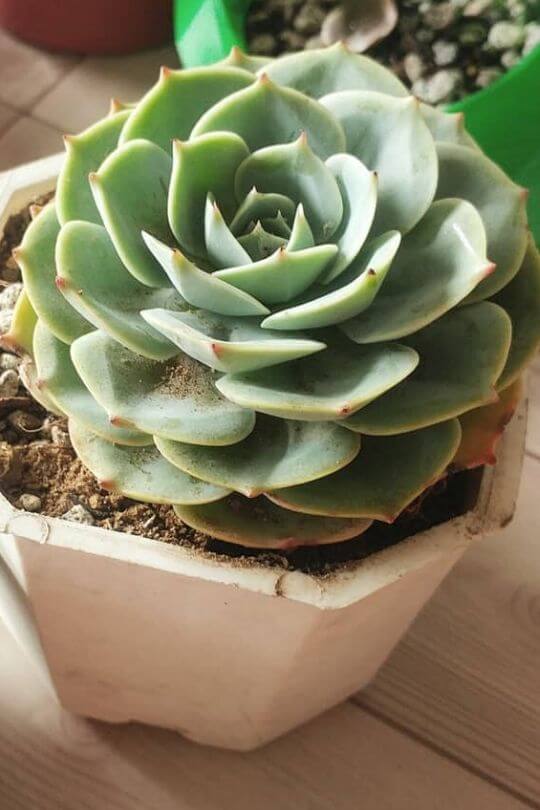
Echeveria is a succulent plant known for its beautiful display of evergreen leafage. They are also one of the most popular types of succulents displayed in floral arrangements and terrariums. They come in various colors and are indeed beautiful additions to homes.
These succulents can live for three years to several decades, and you must provide them the right care and growing conditions. Echeveria is very easy to take care of, even for first-timers.
Echeverias thrive in a substantial amount of light. It’s essential to place it under direct sunlight for at least four to five hours.
Don’t let it stay more than that to avoid burning the leaves. The soil should be well-draining and should not be overwatered.
If you’re living in a warm area, then this plant is a perfect choice. They thrive in hot and dry conditions. They can’t tolerate cold, and too much humidity will cause them to die.
How to Keep Succulents Alive?
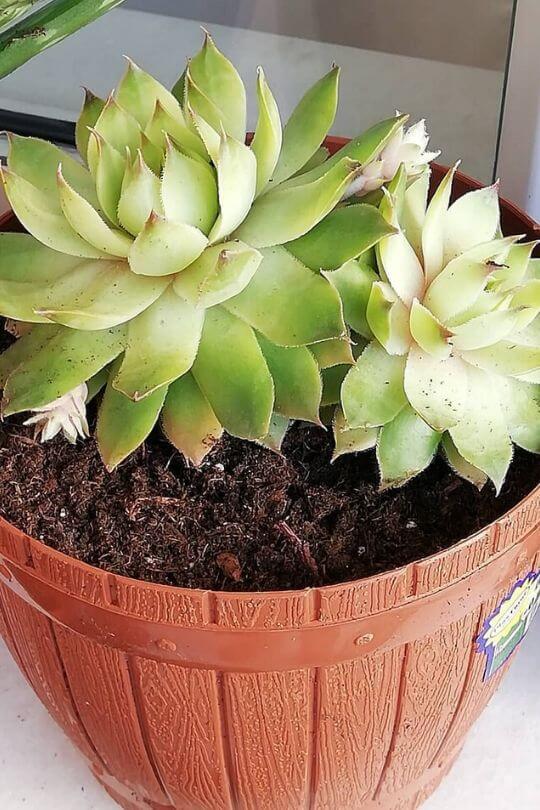
Succulents are probably one of the easiest plants you can take care of at home. They can survive harsh environments with very little water for long periods.
However, even if this is the case, some people still find caring for these plants hard because of their unusual growth requirements.
But, rest easy. There are very few things that you need to remember to keep these plants healthy and alive. Here are five ways to do it:
1: Provide Room To Breathe
Although succulents placed together in one container look beautiful, this is not the ideal environment you would like to put them in.
Succulents need space and a room to breathe. Here is the number one reason why – succulent plants need a root zone.
As stated in the earlier part of this article, succulents have thick leaves, stems, and roots as these are where they store water. Some succulents root grow so fast that they can fill a 6-inch pot in a short period.
By not providing enough root zone, you deny the plant an opportunity to grow larger. They will then gradually lose interior moisture, leaves decolor and wrinkle, stems become more resilient, and the root cells die slowly.
In other words, the succulent will start rotting and eventually die.
2: Don’t Expose Them On Too Much Sunlight
Yes, succulents do survive harsh environments, but that doesn’t mean you would expose them under the heat of the sun with the hottest temperatures.
Some succulents can grow in these environments, but it’s not all. So it’s best to research and ensure if the type of succulent you have can survive under direct sunlight.
If it’s not, make sure to provide some shade to protect them from the sun, especially if the temperature reaches 90 degrees Fahrenheit. Most succulents in green color and are variegated are the most endangered with sunburns.
With these succulents, you can place them on a window with direct sunlight but has enough shade to cover too.
Red, gray, blue, or succulents full of spines are the ones that can survive a scorching heat of the sun. If you’re in a warm region that doesn’t rain often, then these succulent types are your best choices.
3: Provide Them With A Well-Drainage System
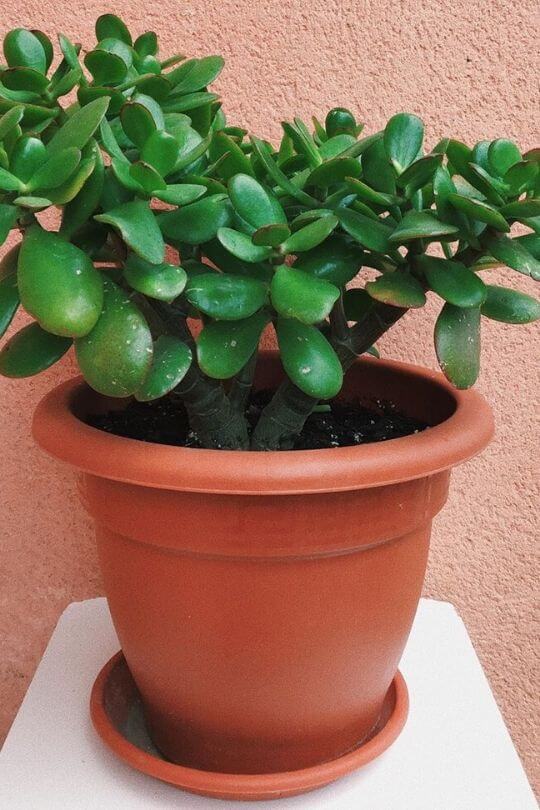
Since succulents are drought-tolerant plants, staying in a wet environment can cause them to rot and die. This is why having a well-drainage system is essential.
You should start by choosing the right kind of soil. Wet soil can overmoisture the plant, which will cause them to rot and die.
To get the ideal soil for your succulent plant, you would need to create your soil mix. The highly recommended combination is ⅓ organic matter and ⅔ minerals materials.
Examples of organic soil are potting soil, pine bark, compost, and coconut coir. For the minerals, you can use coarse sand, perlite, volcanic rock, or gravel.
Other minerals that you can get for your soil mix are diatomaceous earth, chicken grit, decomposed granite, and non-soluble cat-litter.
Once you get the right soil, it’s time to choose the right pot. Ideally, it should be a pot with drain holes at the bottom. This will allow the water to drain through the pot and not stay, making the soil wet.
4: Give Them Little Water
Just because succulents are drought-resistant, it doesn’t mean that they don’t need water. They still require water, but only in tiny amounts. It’s crucial not to overwater them as this will only cause the plant to rot.
Pour some water on your pot until it drains out the bottom. You need to water it again only if 1-inch deep of the surface of your soil feels dry. You might need to water your succulents once or twice a week, depending on this.
If you live in colder regions or if it’s winter, you need to refrain from watering your plants.
5: Feed Them
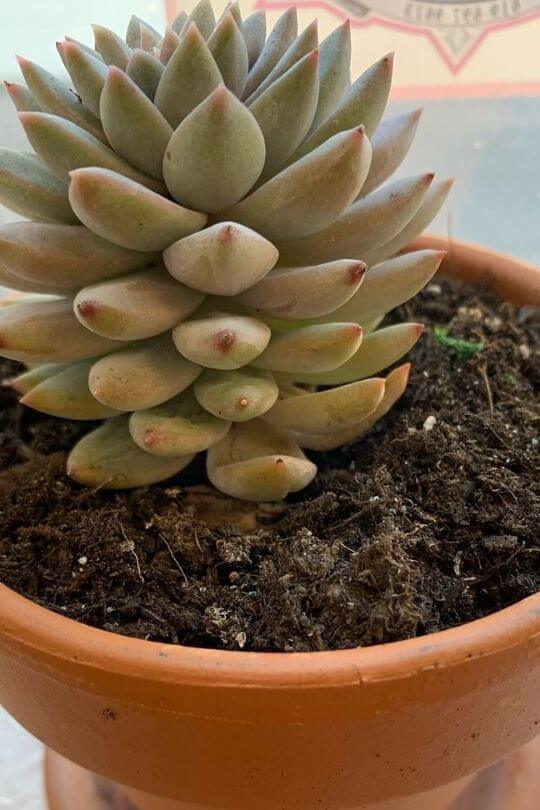
Succulents can survive environments with deficient nutrients. However, that doesn’t mean that they don’t need any fertilizer at all.
Fertilizers contain a combination of nitrogen, phosphorus, and potassium that your succulent needs for healthy growth.
However, just like in water, don’t feed them too much. You can even just feed the soil at least once a year to avoid burning your plant.
It’s also best to use a well-balanced fertilizer and feed the soil at the beginning of the plant’s growing season.
Conclusion
Succulents are indeed low-maintenance plants. And the best thing about these plants is they have a very long lifespan, where they can live for centuries long.
That’s amazing! But of course, you would need to put in some little amount of effort too for them to thrive.
They are best fit for those who want a fresher home environment but don’t have a lot of time watering plants and giving them proper TLC.
They are also really nice to have, especially for those who travel often. Take a look at the sample succulents above and see which might be the best fit for your home.
So, if you’re starting out in your garden, or just want to make your apartment look fresher, try succulent plants. They are straightforward to care, and will surely not give you plenty of headaches.

Written By
Amber Noyes
Amber Noyes was born and raised in a suburban California town, San Mateo. She holds a master’s degree in horticulture from the University of California as well as a BS in Biology from the University of San Francisco. With experience working on an organic farm, water conservation research, farmers’ markets, and plant nursery, she understands what makes plants thrive and how we can better understand the connection between microclimate and plant health. When she’s not on the land, Amber loves informing people of new ideas/things related to gardening, especially organic gardening, houseplants, and growing plants in a small space.
